If you live in a cold-weather climate, chances are high that the water pipes in your home get frozen in Sub-Zero temperatures (temperatures below 0°C). As a result, it cripples your water supply by causing icing in the pipeline.
However, there’s an easy trick to avoid this problem. You just have to simply let one of your faucets slowly drip water.
Believe it or not, this simple trick can save your waterline from getting frozen due to low temperature. Also, it will make sure that the pipes are not jammed or burst due to icing.
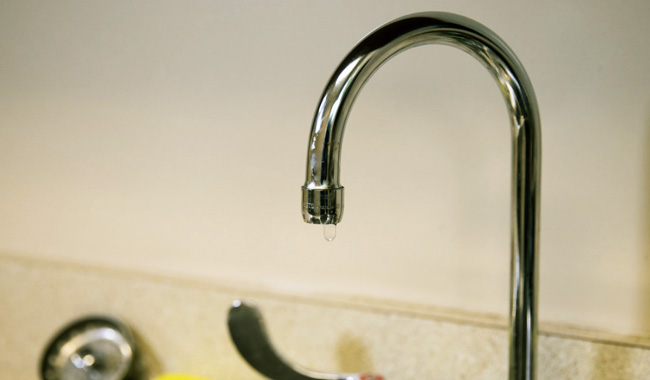
When, Why, and How to Drip Your Faucet in Cold Weather?
Now, you might be tempted to know how this method works. That’s why, in this discussion, we have explained this matter in further detail. For your convenience, here, we have elaborated on when, why, and how to drip your faucet in cold weather.
So, if you want to stay worry-free in the cold winter, pay attention to this article post till the end!!
How Water Fridges in Pipe?
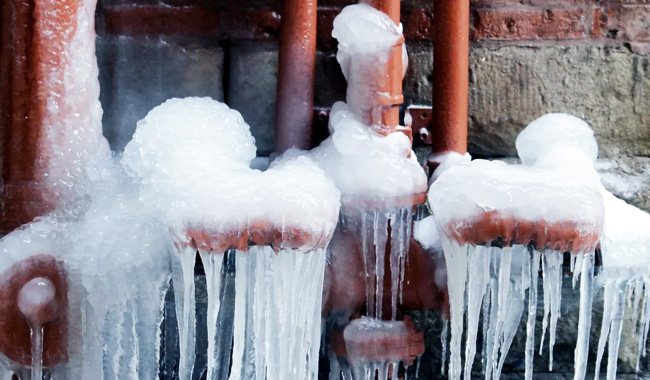
The role of nature is that, when water stays at a Sub-Zero temperature (below 0°C or 32° F) for some time, it will start to freeze. And, that’s what causes the pipeline to get frozen.
More specifically, in the wintertime, when the outer temperature gets down to practically sub-zero, the cold environment absorbs all the heat energy from the water pipeline of your house. As a result, slowly but surely, the water in the pipeline gets frozen.
Now, this phenomenon further intensifies when you are not using your water pipeline for multiple hours (such as when you’re sleeping at night). And, as a final result, it ends up fridging the whole pipeline of your house.
When Should I Let My Faucets Drip?
We recommend that you let your faucets drip in the below circumstances:
When You Are Going to Sleep:
When you go to bed for a night’s sleep, your water system is not used for multiple hours. As a result, the chance of your pipeline getting frozen is very high at those hours. That’s why our recommendation is that you let your kitchen faucet drip before going to bed.
When Your Internal Heating is Down:
If you have an internal heater in your home, sometimes it’s sufficient to keep the water line from getting frozen.
However, in such a circumstance when the power goes down and the internal heater goes down as well, you’ll have to let your faucet drip in order to save your pipes from getting jammed or iced.
When Your Internal Heater is Not Powerful Enough:
In the circumstance where your home heater is not powerful enough to keep your water pipeline warm, we highly recommend that you let at least one of your water faucets drip.
How Much Should I Drip My Faucet to Prevent Freezing?
The dripping amount that you’ll be allowing doesn’t have to be a continuous water flow. Rather, it is just okay to let your faucet have a steady and slow dripping.
This means you should not let your faucet drip to such a degree that it becomes water waste. Instead, we suggest that you let the dripping be as minimal as possible.
However, remember that the dripping in your faucet has to be in such an amount that it can continue dripping infinitely without getting frozen. For instance, 5 to 10 water drops per minute is an optimum dripping rate.
How Many Faucets Should I Let Drip to Prevent Freezing?
In usual circumstances, it is recommended to let at least one faucet drip in order to prevent icing in the pipeline. However, if you have a large home with a really large water pipeline, you can let multiple faucets drip at the same time.
The trick here is to let the one faucet drip that is the farthest from the main water pump. As a result, the whole water pipeline will stay in a water-flowing state, which will prevent the pipeline from getting iced.
Recommended readings:
Is One Dripping Faucet Enough to Stop Freezing Pipes?
Yes, in most cases, one dripping faucet is enough to stop freezing the pipes. It’s because one faucet is enough to keep an adequate amount of airflow in the pipeline. Therefore, it is safe to say that only one water faucet can indeed save your pipeline from getting jammed by icing.
However, if you have a really large water pipeline system in your house, it may be a better idea to let multiple faucets drip at the same time.
Should I Drip my Faucet Outside?
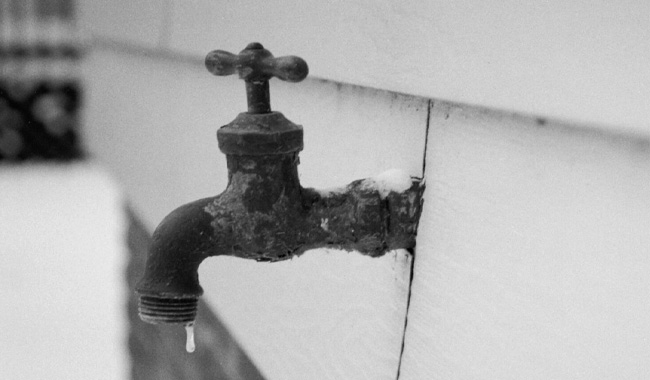
No, it is not a good idea to let the faucet drip which is outside your home (exposed to the outdoor atmosphere). The reason for this is that the temperature outside your home is too harsh and cold for the dripping mechanism to properly work.
As a result, even if you let the faucet outside your house drip, it won’t be able to prevent the icing.
However, a better alternative to this is to empty out any water existing in the pipelines that are exposed to the outside atmosphere. And, it might also be a good idea to insulate your outdoor pipelines with insulation tubing or insulation tapes.
How Much Does It Cost to Allow a Faucet to Drip?
Simply answered, if you can efficiently drip your faucets without wasting much water, you won’t have to bear a heavy water cost. For your convenience, let’s put the appropriate math into perspective so you can easily estimate how much it would cost to trip your faucet.
Suppose you are dripping 10 drips every minute. At that rate, you would have to bear a water wastage of one gallon every day. That, in turn, means that you will be wasting 30 gallons of water per month.
And, depending on the location you’re living in, that particular volume of water will cost around $1 per month, which is pretty minimal.
How to Prevent Your Pipes From Bursting During a Freeze?
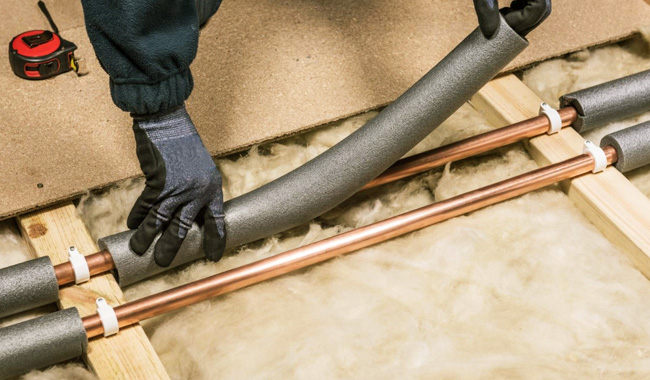
The only way to save your pipes from bursting due to icing is to let your faucets drip. Although you can also take other protective measures, dripping your faucets is the most effective step towards protecting your pipes from bursting.
Now, for your convenience, we have listed down a set of protective steps that you can take in order to save your pipes from bursting during a freeze:
Dripping The Faucets:
As we have mentioned above, if you let it list one faucet drip during a freezing night, you can rest assured that your pipeline is safe from bursting due to icing.
Utilizing Heat Tapes / Cables:
You can also use heat tapes or heat cables in order to keep the temperature of the pipelines higher than the outside atmosphere. As a result, you might be able to effectively provide protection to your pipelines against accidental bursting.
Sealing Up The Leaks:
Having one or multiple leaks in random places of the pipeline can cause the heat to escape from the pipeline to the atmosphere. As a result, the pipeline can get iced pretty quickly. That’s why one of the most important steps toward preventing icing in pipelines is to seal up any existing leaks.
Closing Insulating and Securing Outdoor Water Fixtures:
The icing/freezing in the pipeline can be caused by water fixtures on the outside such as hoses, valves, or faucets. That’s why you need to insulate and close the water fixtures that are outside your home in order to effectively protect your pipes.
Letting The Cabinet Doors Stay Open:
Believe it or not, if you let the cabinet door of your kitchen stay open for a while, it can absorb heat from the indoor atmosphere of your house. Consequently, it can protect the pipelines against icing.
For example, if you’re using an internal heater in your house, the heat provided by the heater can be transferred to the pipeline through the opened cabinets.
Keeping The Room Warm When You’re Away:
In case you are leaving the house for a few days, you should leave your internal heater turned on, so that it can keep warming up the water pipes of your house when you are away.
More specifically, we suggest that you set the temperature to 68° to 72° F in the room heater when you are away from home for 2 to 3 days. This step will not only prevent icing in your pipelines, but it will safeguard your pipes from getting burst.
FAQs
- Should I Drip The Cold Water Faucet Only?
No, in fact, the best strategy is to let both the cold water faucets and the warm water faucets drip at the same time. This way, you can make sure that the water flow in the pipelines is mobile at all times. As a result, it is ensured that the pipes are getting enough heat transfer.
Now, if you decide to only let your cold water faucets drip, you run the risk of letting the warm water faucets slowly lose their heat. Consequently, even the warm water faucets might get frozen over time.
That’s why, if you really want to efficiently protect your pipelines from icing in cold weather, it is the best idea to let both hot water and cold water faucets drip at the same time.
- Will Pipes Freeze at 32 Degrees (Fahrenheit)?
The inherent physical property of water is that it freezes at any temperature below 0° C, which is equivalent to 32° F. Therefore, it is safe to assume that pipes will freeze at 32°F temperature as well.
However, if you can take proper preventive steps such as dripping your water faucets at the proper time, you might be able to prevent your pipelines from freezing at 32° F.
- Do I Need to Let All My Faucets Drip?
Generally speaking, you will need to let at least one water faucet drip in the cold winter. However, you can also let multiple faucets drip at the same time as well. But, you should never let all your faucets drip at the same time.
It’s because, if you let all your faucets drip at once, it will just cause a huge wastage of water, which is completely unnecessary.
Mind you, for the water dripping to perfectly work against icing or freezing, you only need to let a minimal number of faucets drip (normally, only one faucet is enough). But, letting all faucets drip at the same time is nothing but a total waste of water.
Final Thoughts
Well, there you have it, people. Now that you’ve got a clear understanding of when, why, and how to drip your faucet in cold weather, you can just simply solve the problem by following this guide.
The bottom line in this discussion is that letting your faucet drip is a useful technique to prevent icing or accidental bursting in your pipeline.
However, you have to be careful not to waste water in the process of taking advantage of this technique.
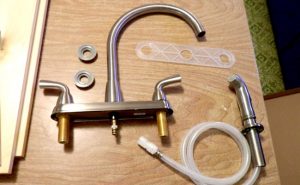
How To Replace A Kitchen Faucet: Step by Step Guide
A kitchen faucet is a must have, obviously, because that’s your source of water. And as such, if it breaks somehow, that can pose a

Top 10 Kitchen Faucet Brands of 2023
Kitchen remodeling projects have a long list of benefits. For you to reap the full perks of your undertakings, you should purpose to give your
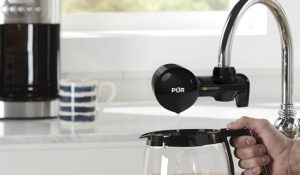
Top 12 Best Faucet Water Filters Review with Ultimate Buying Guide
When it’s about choosing a filtration system, most people try to get the healthiest one possible for their families within their budget. Faucet filters are
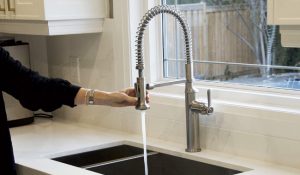
Best Pull Down Kitchen Faucets : Top 9 Picks for 2023
The sophisticated design of the pull-down kitchen faucets does complement your kitchen’s décor. It’s durable and lasts longer. Besides, it offers superior spray stream or
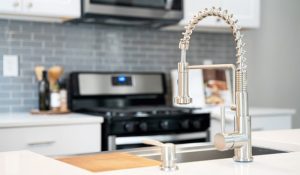
Kitchen Faucet Buying Guide- [5 Step Quick Tips]
Your kitchen faucet is one of the most frequently used appliances in your home. Whether you’re filling up a pot, washing dishes, or getting a
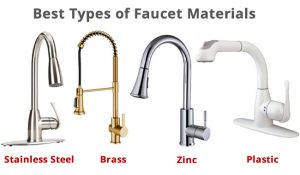
4 Best Faucet Materials for Kitchen or Bathroom Fixtures
Brass is the best option among the materials faucets are made of. Faucets made of Brass are a wise choice since all-brass faucet bodies are durable


